Download DMA-Aero MPS38 Operations Manual
Transcript
D M A A E R O M P S 3 8 V E R 1 . 0 DMA- AERO Ground Support Test Equipment MPS 38 Air Data Test Set User Manual D M A A E R O M P S 3 8 V E R 1 . 0 DMA- Aero 11 Old Sugar Hollow Road, Danbury, Connecticut 06810 Tel: 203 790-8371 - Fax: 203 743-2051 E-mail: [email protected] - www.dma-aero.com This Document is the property of DMA-Aero and may not be copied or otherwise reproduced, communicated in any way to third parties, nor stored in any data processing system without the express written authority of DMAAero. Table of Content Fig.1- Panel Layout 1 4.2.2 Airspeed Command 13 Fig.2- Console/ Keypad layout 2 4.2.3 Altitude Rate Command 13 Introduction 3 4.2.4 Control Menu Display 14 4.3 Entering Command Values with Digit Change SECTION 1 4.4 Acoustic Alarm Function 14 15 Description and Control Keys 1.1 General Description 4 1.2 Physical Description 4 1.3 Keypad Keys 4 SECTION 5 Advanced Operation 5.1 Different Rate Commands SECTION Operational Modes, Menus and Displays 2.1 Control Mode 2.1.1 Control Mode Menu 2.2 Measure Mode 2.2.1 Measure Mode Menu 2.3 Vent Mode 2.3.1 Vent Mode Menu 2.4 Leak Mode 2.4.1 Leak Test Mode Display 2.5 Limits Mode 7 7 8 8 8 8 9 9 10 Pressure Units 17 5.2.1 Entering an Altitude Command In Pressure Units 17 5.2.2 Entering an Airspeed Command in Differential Units 17 5.3 Entering a Pt Command in Pressure units 18 5.4 Leak Test Mode 18 5.5 Measure Mode 19 5.6 Vent Mode 19 Changing Preset Limits & Measurement Units Start up Procedure 11 SECTION 4 6.1 General 20 6.2 Changing Preset Limits 20 6.3 Units Mode 21 6.3.1 Changing Aero / Pressure Entering Air Data Test Parameters Units 4.1 General 12 4.2 Entering Command Values 12 4.2.1 Altitude Command 5.2 Entering Command Values in SECTION 6 SECTION 3 3.1 Start Up Procedure 16 13 21 SECTION 7 SECTION 12 Ultra Low Airspeed Function Calibration 7.1 General 22 7.2 Zeroing Qc Channel 22 11.1 General 31 SECTION 12 MPS 38 Specifications SECTION 8 Safety & Manual Operation 8.1 Manual Vent 23 SECTION 9 Special Functions 9.1 Mach Number 24 9.2 Setting Display 24 9.3 Enhanced Resolution 24 9.4 Date & Time 24 9.5 Center Line Correction 24 9.6 True Airspeed 24 9.7 Valve Map 24 9.8 Special Function Keys 25 SECTION 10 Test Profiles 10.1 General 26 10.2 Selecting, Programming or Editing a Test Profile 26 10.3 Executing a Selected Test Profile 10.4 Programming Example 29 29 12.1 Air Data Functions 32 12.2 Altitude 32 12.3 Vertical Speed 33 12.4 Airspeed 33 12.5 Power Requirements 33 12.6 Dimensions / Weight 33 12.7 Environmental 33 FIG.1 AIR DATA TEST SET MPS 38T 1. AC power switch 8. Static manual vent 2. Fuse 9. AC Power connector 3. Static output connector 4. Pitot output connector 5. Keypad 6. LCD Display 7. Pitot manual vent MPS38 ver 1.0 / © DMA Aero Copyright -1- FIG. 2 - LAYOUT OF KEYBOARD MPS38 ver 1.0 / © DMA Aero Copyright -2- Introduction The MPS 38 is a Flight Line Air Data Test Set (ADTS) instrument, used to measure and control pressures and vacuums, also associated with Altitudes, Airspeeds and Rates of Change. The instrument is housed in a rugged composite material case. Pressure Never apply pressure greater than the maximum safe working pressure to the equipment. Safety The MPS 38 is designed to be safe when operated in the manner described in this manual; it should be used only in the described way and for no other purposes. The manual contains Safety Instructions that must be followed; the instructions are either warnings or cautions given to protect the Operator and the equipment from damage. Ensure the correct power supply is used and the equipment is grounded. Use trained technicians and good engineering practices for all the procedures in this manual. Toxic Materials There are no known toxic materials used in the manufacture or build standard of the MPS 38. Maintenance and Repair The MPS 38 is to be maintained and repaired using the approved procedures and be carried out only by authorized agencies or the manufacturer. Important notes • • • • The manual vents on the front panel must be completely closed before the start of testing. Connect the MPS 38 to the aircraft’s pitot static system only after the start procedure has completed and the unit displays “Ambient pressure reached”. For optimum operation and the highest accuracy, the MPS 38 should be operated with the front panel face up. When transporting the MPS 38 in an un-pressurized aircraft set the case vent switch to the vent position. MPS38 ver 1.0 / © DMA Aero Copyright -3- SECTION 1 – MPS 38 Description and Control Keys 1.1 General The DMA MPS 38 is an automatically controlled low cost Air Data Test solution for troubleshooting and certification of aircraft pitot-static .The MPS 38 instrument is simple and fast to use. The operator interface is easy to understand by both experts and first time users. All testing and troubleshooting with the MPS 38 is carried out via an intuitively arranged color-coded keypad on the front panel. All the data necessary for the testing are displayed on a large, easy to read LCD display. Commanded and measured test values are simultaneously displayed at all times. The MPS 38 incorporates an internal on-demand pump unit: to increase the pump life the internal vacuum and pressure source runs only when required by the control system. The MPS 38 comes equipped with built-in protection to safeguard the test set itself and the instruments under test, ensuring no more damaged instruments or air data test sets. Both the test set and instruments under test are protected by the safety conscious MPS 38 design features. The pressure condition of Ps greater than Pt (negative airspeed) is prevented in both the manual venting and automatic operating modes. The Unit Under Test (UUT) is safely isolated in the event of any power loss. The MPS 38 is designed to reject any commanded values which exceed pre-programmed limits. The MPS 38 provides facilities to enable in-house calibrations to be performed by the user if desired by using a transfer calibration standard (for example the DMA's own PAMB 6 or PAMB7), the MPS 38 can be calibrated in typically less than 20 minutes. Calibration is performed by software adjustment only. No mechanical adjustments are required to the MPS 38. Calibration factors are password protected for security. The lid of the MPS38 is removable if required. Open the lid to allow the hinge machined slot to be aligned with the steel hinge pin and then detach the lid by simply pulling away from the case. 1.2 Physical Description The MPS 38 consists of a power supply, digital control cards, pressure sensors, and pneumatic control components. It is packaged within a lightweight HDPE (high density polyethylene) case. The front panel provides operating controls and displays, pressure fittings and connectors for external control. A view of the MPS 38 console is displayed in Figure 1. 1.3 Keypad Keys Control and data entry of the MPS 38 is via a keypad on the front panel (Fig. 2). Five rows of keys provide access to all of the MPS 38 control and operational functions. Keys are color coded for ease of use. MPS38 ver 1.0 / © DMA Aero Copyright -4- First Row keys: HALT: When pressed the MPS 38 remains in the CONTROL MODE but adopts automatically, as the COMMANDED (controlled) air data parameters, those values which are present at the instant the HALT key is pressed. The HALT key can be considered as a “panic button” to be used when it is necessary to hold the parameters at the current values. LIMITS: used to enter the LIMITS MENU. This menu is for viewing or changing the default limit values as they are pre-set from the factory. To return to CONTROL MODE of operation, the LIMITS key must be pressed a second time. Refer to Section 6. MEM : is used to memorize new parameters. SHIFT has the same function as a shift key on a computer keyboard. It is used together with other keys to command alternate key functions (e.g. [SHIFT] + [0] to activate the “Fine Tuning”). A summary of SHIFT key operations is shown in Section 9, Para. 11. Backspace is used to delete the last entered digit. Second Row Keys, left side: MEAS: the MEAS or “MEASURE” is used to stop the operation of the pressure control system leaving only the pressure measuring system active. This function is used to achieve extra accuracy for measuring pressures statically to avoid any controller-induced effects. The RUN key is used to return the MPS 38 to the CONTROL MODE. VENT: is used to vent the pressure in the static and pitot lines to ambient pressure. This function allows for the safe disconnection of test lines from the aircraft or UUT at the end of testing. The RUN key is used to restore the MPS 38 to CONTROL MODE after the Vent function has been selected. LEAK: is used to automatically perform the leak test using the built in timer/stopwatch function of the MPS 38. The RUN key is used to restore the test set to the CONTROL MODE of operation after the LEAK key is used. Second and Third Row Keys, right side: The UP / DOWN triangular keys are used: ▲ or ▼ • • • • to increase (decrease) the different parameters (ALTITUDE, AIRSPEED, RATE OF CHANGE, PRESSURES) by a selected digit value; in the UNITS MENU, for changing of parameters units; in programmed profiles to select the next (or previous) test point; in the DISPLAY MENU to set the display (brightness and contrast) MPS38 ver 1.0 / © DMA Aero Copyright -5- The same keys are also used in some other specified operations. Third Row, left side: RUN: is used to initiate or to return the equipment to CONTROL MODE. Note The RUN key is the most frequently used key in the general operation of the MPS 38 Qc/Pitot: is used to toggle switch between differential pressure (Qc) and pitot pressure.(Pt) ALRt/ASPRt: is a toggle switch used to select ALTITUDE RATE, AIRSPEED RATE, STATIC PRESSURE RATE or PITOT PRESSURE RATE. The default AIRSPEED RATE value is 300 knots/min. The default ALTITUDE RATE is 3000 Ft/min. Fourth and Fifth Row Keys, left: The DIGIT key is used to select different digits on each Air Data Parameter. The ← or → keys are used to navigate the display in the CONTROL, LIMITS and UNITS menus. These keys are used to move the cursor “>” to the desired input zone for entry of a specific value using the number keypad. The 000 key is used to enter thousands into a demand value, if allowed by the programmed limits. The ENTER key is used to input desired data into the MPS 38. The operation is the same as an “Enter” key on a computer keyboard. Numerical keypad, center: This keypad is a standard telephone layout ten-key keypad. The numerical keys (0–9) are used to enter any desired value of the various controlled parameters. After keying in number values, the ENTER key is always required to enter, confirm, the completed number into the system. Note For some optional operations the number keys may be used in combination with the Shift key to access additional functions. The decimal point key (.) is used to input decimal points when required (e.g. airspeed). The minus key (-) is used to set negative altitudes (e.g. when static pressure is higher than the ambient). MPS38 ver 1.0 / © DMA Aero Copyright -6- SECTION 2 – Operational Modes, Menus and Displays Note The MPS 38 has multiple operational modes, menus and displays. Modes are defined by the operational characteristics that are in control during operation in the named mode. Menus refer to operations and information that are accessible and changeable in the display LCS screen. Displays refer to the data that is displayed in a read- only format on the screen. Display screen are read only and do not allow parameters to entered or changed 2.1 Control Mode This is the primary mode for control of the MPS 38. Air data parameter entry and all the operational/control functions are all performed in this mode. The access to CONTROL MODE is through the CONTROL MENU. Entry to the CONTROL MODE is by pressing the RUN key. Return to CONTROL MODE is by pressing the RUN key at any time from any other mode of operation. 2.1.1 Control Mode Menu The CONTROL MODE MENU is displayed when the MPS 38 is in CONTROL MODE. SIMULATED (actual) values are displayed on the “SIM” line of the display while the COMMANDED (target) values are displayed on the “CMD” line of the display. Parameters on the upper two lines of the LCD screen are displayed in aeronautical units (upper “SIM” and “CMD” lines) while the equivalent pressure parameters will be displayed on the lower two lines of the screen (lower “SIM” and “CMD” lines). ALTITUDE AIRSPEED RATE SIM 1934 149.5 CMD >5000 300 3000 CMD SIM 27.890 1.082 0.233 SIM CMD 24.896 4.534 CTR CMD Pst The current measured altitude at the output port. Qc/Pt A 3000 SIM MACH The altitude channel commanded (target) value in feet. “CTR” displayed indicating that the unit is in CONTRL MODE. DISPLAY LAYOUT IN CONTROL MODE MPS38 ver 1.0 / © DMA Aero Copyright -7- 2.2 Measure Mode MEASURE MODE is used to obtain precise measurements of the system pressures free from any controller effects. It stops the action of the controller so that only the pressure measuring system is activated: all control functions are disabled and only sensor measurement functions are active. The unit under test (UUT) is now completely isolated from the pressure generator and a precise measurement can be obtained when the line pressures in the system under test are stabilized. Whenever a precision measurement is required, in particular when large volumes are involved, the MEAS function should be used. MEASUREMENT MODE can be accessed from all menus. Entry into Measure mode is achieved by pressing the MEAS key. 2.2.1 Measure Mode Menu The MEASURE MODE MENU is displayed when the MPS 38 is in the MEASURE MODE. When the MEASURE MODE MENU is displayed, the word “MEAS” will appear in the lower right-hand corner of the LCD screen. ALTITUDE AIRSPEED RATE SIM 1934 149.5 CMD 5000 300 3000 CMD SIM 27.890 1.082 0.233 SIM CMD 24.896 4.534 MEAS CMD Qc/Ptot MACH Pst A 3000 DISPLAY LAYOUT IN MEASURE MODE SIM “MEAS” keyword indicating unit is in MEASURE MODE. 2.3 Vent Mode This mode is used to vent the pitot and static ports of the MPS 38 to the ambient pressure condition. VENT MODE operates as follows: By pressing the VENT key the MPS 38 will automatically set the airspeed to zero and an altitude equal to ambient pressure. When the ambient pressure is reached the display will read “Ambient Pressure Reached” at which time it is safe to disconnect from the aircraft. From VENT MODE, only CONTROL MODE or HALT MODE can be used to exit the vent procedure. To return to CONTROL MODE press the RUN key. 2.3.1 Vent Mode Menu The VENT MODE MENU is displayed when the MPS 38 is in the VENT MODE. When the VENT MODE MENU is displayed, the word “VENT” will appear in the lower right-hand corner of the LCD screen. MPS38 ver 1.0 / © DMA Aero Copyright -8- ALTITUDE AIRSPEED RATE SIM 1934 149.5 CMD 5000 300 3000 CMD SIM 27.890 1.082 0.233 SIM CMD 24.896 4.534 VENT CMD Qc/Ptot MACH Pst A 3000 SIM “VENT” keyword displayed indicating unit is in VENT MODE. DISPLAY LAYOUT IN VENT MODE 2.4 Leak Test Mode The LEAK MODE initiates the automatic leak test and timer/stopwatch measurement feature of the MPS 38. LEAK MODE access is through the LEAK MENU. • Entry to the LEAK MODE is by pressing the LEAK key. • Return to CONTROL MODE is by pressing the RUN key. 2.4.1 Leak Test Mode Display The LEAK MODE DIPLAY is shown when the MPS 38 is in the LEAK MODE. When the LEAK MODE is in operation, ALITUDE RATE (“AltRate”) and AIRSPEED RATE (“Asp Rate”) plus time in seconds will be displayed on the upper two lines of the LCD screen. The legend “LEAK” appears in the lower right-hand corner of the LCD screen. ALTITUDE AIRSPEED RATE AspRate SIM SIM sec AltRate CMD 66 -6 SIM 20.593 0.504 0.189 SIM CMD 28.577 0.481 LEAK CMD Pst Elapsed time in seconds 0.1 Qc/Ptot CMD MACH Current altitude leak rate Current airspeed leak rate DISPLAY LAYOUT IN LEAK MODE MPS38 ver 1.0 / © DMA Aero Copyright -9- Note For accurate leak test results wait until the values in the LEAK DISPLAY have stabilized after pressing the LEAK key. Typically this is in the order of one minute. Once the leak rate has stabilized, press the LEAK key again to reset the clock for a fresh start of the leak test. 2.5 Limits Mode The LIMITS MODE allows the pre-programmed maximum parameter values for all functions to be changed. Access to the LIMITS MODE is via the LIMITS MENU. The LIMITS key is used to enter the LIMITS MENU. To return to CONTROL MODE or any other mode the LIMITS key must be pressed a second time. MPS38 ver 1.0 / © DMA Aero Copyright - 10 - SECTION 3 – Start up Procedure 3.1 Start Up Procedure Place the MPS 38 with the panel face up. Connect the ac power cord to the military style connector on the front panel. Leave the static and pitot lines disconnected. Static and pitot should only be connected to the aircraft after the unit has been powered up and has successfully completed its self-test routine and displays “Ambient Pressure Reached”. Turn the power and the battery toggle switch to the “ON” position. The MPS 38 display will first illuminate; then show the serial number of the unit, total operation time and the last calibration date. When the start-up and self-check sequence is completed, there are two possibilities: If the altitude value measured in the static line is less than 8,000 ft then the unit will automatically vent the pitot and static lines to ambient. The pitot and static ports will be automatically zeroed. When the venting process is completed, the display will read "AMBIENT PRESSURE REACHED". After this message is displayed, press RUN to initiate the use in the CONTROL MODE. If the altitude value measured in the static line is greater than 8,000 ft the following conditions will be automatically imposed: • • • The Target Altitude will be adjusted to the value measured in the static line. The Target Airspeed will be adjusted to the value measured in the pitot line. The Target Altitude rate will be set at fixed value of 3,000ft/min. The operator is then able to select RUN to change these high parameter values to either a suitable test point for the UUT or to return the unit to ambient conditions via a vent operation. To vent the MPS 38 and zero the pitot line, press the VENT key, again wait until "AMBIENT PRESSURE REACHED" is displayed or press RUN to then enter the CONTROL MODE. Note For maximum accuracy of airspeed measurement at low airspeed refer to section 7. Warning The MPS 38 should not be connected or disconnected from an aircraft until the unit has successfully passed its self-test and the unit’s display reads "AMBIENT MPS38 ver 1.0 / © DMA Aero Copyright - 11 - PRESSURE REACHED". Failure to follow this warning could result in damage to aircraft instruments. SECTION 4 – Entering Air Data Test Parameters 4.1 General Air Data Parameters (ALTITUDE, AIRSPEED and RATE) can be commanded (entered) in two modes: 1 CONTROL MODE. When the CONTROL MODE is active the MPS 38 starts to change the pressures as soon as new air data values are entered. 2 MEASURE MODE. If it is desired that the MPS 38 starts to change pressures only after all the new parameters have been entered, it is necessary to go to the MEASURE (or HALT MODE), enter the new target values and then return to CONTROL MODE by pressing the RUN key. New target values can also be entered by using the triangular keys ▲ (to increment) or ▼ (to decrement). Note If an aim value for altitude, airspeed, or altitude rate is entered that is greater than the current limit, the values programmed in the limits menu, then the valued entered will be rejected and the max limit value will be entered automatically. For example if a user where to enter 1000 kts as a new airspeed aim while the limit is 400 kts then the 1000 kts entry would be replaced with 400 kts. 4.2 Method 1 : Entering Command (Target) Values The MPS 38 is programmed by entering COMMAND (“CMD”) values for ALTITUDE, AIRSPEED and RATE OF CHANGE in the CONTROL MODE. A COMMAND value may be entered in any of the COMMAND input zones to select ALTITUDE, AIRSPEED and RATE. To enter a COMMAND value, the cursor (>) must be in the desired input zone. Arrow keys (← or →) are used to navigate the cursor (>) to the desired input zone. The arrow keys can be used at any time when the MPS 38 is in CONTROL, HALT or MEASURE MODE. The right and left arrow keys (← or →) are used to move between each of the three-parameter columns (ALTITUDE, AIRSPEED and RATE) and additionally move up and down on the three display screen parameter columns (the ALTITUDE column, AIRSPEED column and RATE column). By pressing the right or left arrow keys the cursor (>) navigates among the three- MPS38 ver 1.0 / © DMA Aero Copyright - 12 - parameter columns on the upper air data COMMAND (“CMD”) LINE (ALTITUDE, AIRSPEED and RATE) and the lower COMMAND LINE for the pressure-engineering units. Command input zones for altitude, airspeed, and rate. ALTITUDE AIRSPEED RATE SIM SIM 1934 CMD >5000 300 3000 CMD SIM 27.890 1.082 0.233 SIM CMD 24.896 4.534 CTR CMD Qc/Ptot MACH Pst 149.5 A 3000 Command cursor indicating altitude channel selected 4.2.1 Entering Altitude Command Values To enter an altitude, scroll the cursor to “ALTITUDE” in the COMMAND (“CMD”) LINE input zone. Enter the target value by entering it on the keypad (20000 feet for example). If an incorrect number is selected, the BACKSPACE key can be used to erase the incorrect digit. After the number is erased with the BACKSPACE key, the correct number can be entered. When the correct ALTITUDE has been entered, press the ENTER key to activate the new value. 4.2.2 Entering Airspeed Command Values Scroll the cursor to “AIRSPEED” in the COMMAND (“CMD”) LINE input zone. Enter the target value by entering it on the keypad (400 knots, for example). If an incorrect number is selected, the BACKSPACE key can be used to erase the incorrect digit. When the correct AIRSPEED has been entered press the ENTER key to activate the new value. 4.2.3 Entering Altitude Rate Command Values Scroll the cursor to “RATE” n the COMMAND (“CMD”) LINE input zone. Enter the target value by digitizing it on the keypad (3000 ft/min. for example). If an incorrect number is selected, the BACKSPACE key can be used to erase the incorrect digit. When the correct RATE has been digitized, press the ENTER key to activate the new value. The MPS 38 will begin to achieve the entered COMMAND LINE value immediately. MPS38 ver 1.0 / © DMA Aero Copyright - 13 - 4.2.4 Control Menu Display In CONTROL MODE the display will appear as in the following example, where the engineering measure units are feet, knots and feet/min., and the pressure units are inHg: ALTITUDE AIRSPEED RATE SIM 1934 149.5 CMD 5000 300 3000 CMD SIM 27.890 1.082 0.233 SIM CMD 24.896 4.534 CTR CMD Pst Qc/Ptot A 3000 SIM MACH DISPLAY LAYOUT IN THE CONTROL MODE 4.3 Method 2: Entering Command Values with Digit Change Air Data COMMAND values can also be modified by using the Digit function. As with the direct value entry method above, the Digit function can be used in CONTROL or in MEASURE MODE. The Digit function provides a quick way to change a channels COMMAND value. The UP and DOWN triangle keys ( ▲ or ▼) and the DIGIT key are used with the “Digit Function”. Once an input zone has been selected with the arrow keys (← or →), each COMMAND input zone has one digit flashing. Using the up / down arrow keys (▲ or ▼) the operator can increase or decrease the flashing digit a quantity of 1 with each key press. Advancing the flashing digit to the left within the input zone is accomplished by pressing the DIGIT key or by pressing SHIFT DIGIT key to move it right. For example: Altitude parameter is selected, and command (target) value is 6543: • If 6 is the flashing digit, by pressing the up arrow (▲) key the altitude target can be modified to 7543 or by pressing the down ( ▼ )arrow key the target becomes 5543. • Press the DIGIT key twice, which advances the flashing digit from 6 to 4. Now the operator can increase to 5553 by pushing the up arrow key or to 5533 by pushing the down arrow key. Ultimately the Digit function can increase or decrease the value of a parameter by 1, 10, or 100 depending on the flashing digit location. Using the Digit function, once an air data parameter is selected, any digit can be modified separately from the others. A continuous increase or decrease of a command value is obtained when the up down arrow (▲ or ▼) keys are continually pressed. MPS38 ver 1.0 / © DMA Aero Copyright - 14 - 4.4 Acoustic Alarm Function When the SIMulated (Actual) values are almost at the CoMmanD (target) values (around 10 feet and 1 knot) an acoustic alarm will start sounding (beep-beep) to warn the operator that the MPS 38 is approaching the target values. MPS38 ver 1.0 / © DMA Aero Copyright - 15 - SECTION 5 – Advanced Operations 5.1 Different Rate Commands The ALRt/ASPRt key is used to select either of the two rates, ALTITUDE RATE or AIRSPEED RATE. Below the word “RATE” a letter in front of the numerical value will indicate which of the two rates are active. The letter “A” will indicate to the operator that the rate being controlled is the ALTITUDE RATE. The Altitude Rate is the default at switch on. By pressing the ALRt/ASPRt key the letter “S” will appear in front of the value shown to confirm that the equipment is now controlling the AIRSPEED RATE. Note that the equipment has an AIRSPEED RATE default value of 300 Kts/min. ALTITUDE AIRSPEED RATE SIM 1934 149.5 CMD 5000 300 3000 CMD SIM 27.890 1.082 0.233 SIM CMD 24.896 4.534 CTR CMD Pst Qc/Ptot A 3000 SIM MACH “A” displayed indicating altitude rate currently displayed. MPS38 ver 1.0 / © DMA Aero Copyright - 16 - 5.2 Entering Command Values in Pressure Units If desired direct pressure units can be used to enter pitot or static pressure values or Qc differential pressure values (pitot pressure – static pressure). For this operation the second lower COMMAND (CMD) LINE input zones are used. The commanded default pressure value is displayed in inches of mercury (inHg). ALTITUDE RATE SIM 1934 149.5 3000 SIM CMD 5000 300 3000 CMD SIM 27.890 1.082 0.495 SIM >24.896 4.534 0.234 CMD CMD Pst Ps channel Input Zone 5.2.1 AIRSPEED Qc/Ptot Qc channel input zone MACH Pt channel input zone Entering a Altitude Command Value in Pressure Units Navigate the cursor to the lower COMMAND LINE input zone for Pst (Static Pressure). The desired pressure value can be entered by using a direct number value or by using the digits function. (Refer to section 4.2) Enter the desired specific pressure value by pressing the number keys (18.00 inHg for example). If an incorrect number is selected, the BACKSPACE key can be used to erase the incorrect digit. After the incorrect number has been erased with the BACKSPACE key, the correct number can be entered. When the correct Altitude is entered, press the ENTER key to confirm the new value. 5.2.2 Entering a Airspeed Command using Differential Pressure Values Navigate the cursor to the COMMAND (“CMD”) LINE input zone for Qc (Differential Pressure). The desired pressure value can be entered by using a direct number value or by changing digits. Enter the desired specific pressure value by pressing the number keys (10.55 inHg for example). If an incorrect number is selected, the BACKSPACE key can be used to erase the incorrect digit. After the incorrect number has been erased with the BACKSPACE key, the correct number can be entered. When the correct Qc is entered, press the ENTER key to confirm the new value. MPS38 ver 1.0 / © DMA Aero Copyright - 17 - 5.3 Entering a Pt (total) Command in Pressure Units To enter a specific Pitot pressure, use the Qc/Ptot key. The Qc/Ptot key is used to toggle between the normal default setting Differential Pressure (Qc) and Pitot Pressure (Ptot). The value displayed in the COMMAND (“CMD”) LINE input zone will toggle between DIFFERENTIAL PRESSURE (Qc) and PITOT PRESSURE (Ptot). When the Qc/Ptot key is used to toggle to PITOT PRESSURE (Ptot), the values of TOTAL PRESSURE will appear. Enter the desired PITOT PRESSURE (Ptot) and press the ENTER key to confirm the new value. Use the Qc/Ptot key to toggle again to DIFFERENTIAL PRESSURE (Qc), if required. 5.4 Leak Test Mode The LEAK TEST MODE performs a leak test of the static and pitot lines using a built-in timing function. Leak rates for pitot and static lines are calculated every second and are automatically shown in ft/min. and kt/min. in the LEAK MODE DISPLAY screen. Select the leak test function by pressing the LEAK key. The LEAK DISPLAY will appear. The LEAK DISPLAY will begin counting the seconds and displaying the leak rates for the pitot and static circuits. While in LEAK TEST MODE all isolator valves are open. ALTITUDE AIRSPEED RATE AspRate SIM SIM sec AltRate CMD 66 -6 SIM 20.593 0.504 0.189 SIM CMD 28.577 0.481 LEAK CMD Pst Elapsed time in seconds Qc/Ptot 0.1 CMD MACH Current altitude leak rate Current airspeed leak rate Note For accurate leak test results wait until the values in the LEAK DISPLAY have stabilized after pressing the LEAK key. Typically this is in the order of one minute. Once the leak rate has stabilized, press the LEAK key again to reset the clock for a fresh start of the leak test. MPS38 ver 1.0 / © DMA Aero Copyright - 18 - 5.5 Measure Mode The MEAS key places the MPS 38 into the measure mode of operation. In this mode only the pressure measuring system remains activated. The unit under test is completely isolated from the pressure generator system of the MPS 38. A precision measurement can be obtained when the test lines pressures are stabilized. This mode should be used whenever a very precise measurement is required. The MEASURE MODE function should always be used if large test volumes are being measured, such as with an older aircraft. To return to the CONTROL MODE, press the CNTRL key. Caution When the MPS 38 is in MEASURE MODE or in LEAK MODE of operation and a leak rate higher than a prefixed value (ie. 3,000ft /min) is detected, the equipment will revert automatically to the CONTROL MODE as protection for the unit under test. 5.6 Vent Mode This mode is used to vent the pitot and static ports of the MPS 38 to the current ambient pressure. The VENT MODE operates by pressing the VENT key. The MPS 38 then automatically sets the airspeed to zero and the altitude to ambient pressure. When the conditions are safe to disconnect the hoses the legend: “AMBIENT PRESSURE REACHED” is displayed. Entry to the VENT MODE is by pressing the VENT key. From VENT MODE, only the CONTROL MODE can be accessed. To return to CONTROL MODE press the RUN key. MPS38 ver 1.0 / © DMA Aero Copyright - 19 - SECTION 6 – Changing Preset Limits & Measurement Units 6.1 General The LIMITS MODE allows the pre-programmed maximum parameter values for all functions to be changed. Access to the LIMITS MODE is via the LIMITS-UNITS MENU. The LIMITS key is used to enter the LIMITS MENU. To return to CONTROL MODE or any other mode the LIMITS key must be pressed a second time. 6.2 Changing Preset Limits When the LIMITS-UNITS MODE MENU is displayed, two vertical columns of parameters will be shown, starting with the parameter “AlMx >”. Caution Limits are pre-set at the factory to handle most standard test conditions and to protect most aircraft instrumentation. The operator should exercise extreme caution in setting limits outside the normal default values. Damage to the aircraft instruments could occur if caution is not observed. Please refer to the aircraft’s maintenance manual aircraft’s instrument limits. Limit values can be changed permanently or for the duration of one power-on cycle. The operator should consider carefully which requirement best suites the needs of all test set users. To change the limits or the step values, navigate the cursor to the front of the value of the limit to be changed. To change the value, enter the new value and press the ENTER key. The pre-set limits are given in the LIMITS MENU as follows: ALMx - maximum allowed altitude. ALMi - minimum allowed altitude. ASMx - maximum allowed airspeed. MaMx - maximum allowed Mach number. AltRateMx - maximum allowed altitude/rate. When all required limit changes are entered or custom step functions are set, exit from the LIMITS MENU as above. Pressing the LIMITS key memorizes the new limits and returns the MPS 38 to the CONTROL MODE and to the CONTROL MENU. All future operations will automatically utilize the new MPS38 ver 1.0 / © DMA Aero Copyright - 20 - limits until power is turned off or the limits are changed again. When the MPS 38 power is recycled the original default limit values will be active. 6.3 Unit Mode The UNIT MODE allows the operator to change the current measurement units. Access to the UNIT MODE is via the UNIT key. 6.3.1Changing Aeronautical / Pressure Units From CONTROL MODE gain access to the UNITS MENU by pressing the UNIT key. The last row allows the operator to modify measurement units (UNITS MENU). Options are as follows: Parameters Default Units Options Altitude Ft (feet) mt (meters), hm (hectometers) Airspeed Kt (knots) Kh (kilometers per hour), Mh (miles per hour) Pressure in (inches Hg) hp (hecto Pascal or mbar) Pa (Pascal) Kpa (KiloPascal) pi (pounds per square inch), mm (millimeters Hg) To modify units on the screen for each parameter, use the left and right arrow (← or →) keys to move the cursor (>) in front of each parameter and then the up/down (▲ or ▼) keys to select desired unit. For example if airspeed is preferred in miles per hour instead of knots, just move the cursor (>) in front of “kt” indication. Once knots have been selected use up/down (▲ or ▼) keys to scroll thought the available units until “Mh” appears. After the required pressure units have been properly selected, press the UNITS key once more to return to CONTROL MODE. It is possible to return to CONTROL MODE also by pressing the RUN key. MPS38 ver 1.0 / © DMA Aero Copyright - 21 - Section 7 – Ultra Low Airspeed Function 7.1 General For the most accurate low airspeed measurements it is recommended that the MPS 38 dynamic pressure should be zeroed at the start of each new test sequence where a precision airspeed measurement is required. Zeroing ensures the best accuracy of the airspeed circuit. The altitude channel of the MPS 38 is not affected. Zeroing is accomplished by setting the pressure differential between the pitot and static line to a zero differential at the ambient pressure. 7.2 Zeroing Qc Channel The fully automatic procedure will be activated only in the following conditions: • • • • • The unit is in the CONTROL MODE of operation The Airspeed Value is zero. The static pressure inside the static line is very close to the ambient pressure. The pressure inside the pitot line is almost the same as that in the static line. The commanded altitude rate is equal to 0 Feet/Min and the actual SIM value is close to 0 feet/min. Once the equipment is in the above condition, the auto zero procedure is automatically activated and it is automatically activated every few minutes; wait until the differential pressure is almost equal to zero before commanding new airspeed values. When all the above conditions are satisfied the Differential Pressure ZERO Adjustment can also be commanded by pressing the CAL = (SHIFT MEM). After zeroing the dynamic pressure a resolution of 0.1 knot is provided starting from 10 knots. MPS38 ver 1.0 / © DMA Aero Copyright - 22 - Section 8 – Manual Operation 8.1 Manual Vent The MPS 38 has a manual venting system to reduce the internal pressure values to ambient conditions when the instrument is switched off. In the event that the instrument should fail to operate then a manual vent can be used to bring the aircraft to ambient pressure. The two needle valves (Fig. 1-7, 1-8), located on the front panel, are used for manual venting. Turn counter clockwise to open the two needle valves. The needle valves must be rotated together, very slowly, to avoid any excessive rates (VSI). Rotation of Pitot Vent needle Valve can increase the pitot pressure and too much and rotation of Cross Bleed needle Valve can increase the Altitude Rate too much. Monitor aircraft instruments while performing a manual vent procedure. Caution When manual venting is complete, the two needle valves must be turned fully clockwise (closed) in order for the altitude and airspeed channels to remain leak tight. Failure to close the valves will cause the unit to leak excessively. Do not over tighten. MPS38 ver 1.0 / © DMA Aero Copyright - 23 - Section 9 - Special Functions 9.1 Mach Number MACH NUMBER can be entered as a control parameter in place of an AIRSPEED value. To enter a MACH NUMBER select using ← or → keys the MACH NUMBER value in the COMMAND MENU. After input of the desired MACH NUMBER, press the ENTER. The AIRSPEED corresponding to this Mach number at the set altitude will now be shown in the CMD line of the AIRSPEED column. Note that MACH NUMBERS are altitude dependent. If another Mach number at a different altitude has to be entered, the same procedure must be followed. This is because the Mach number is only calculated for a particular ALTITUDE set as the target AIRSPEED for that ALTITUDE. MACH NUMBER must be entered when the Altitude Rate is not equal to 0. 9.2 Setting Display To set the contrast and backlight of display press (SHIFT 1), then follow the menu instructions. 9.3 Enhanced Resolution The (SHIFT 6) = F6 key activates the enhanced resolution function for pressure readings. To return to normal resolution press (SHIFT 6) = F6 again. 9.4 Date and Time To change the date and time on the internal clock press (SHIFT 7) = F7 then follow the menu instructions. 9.5 Center Line Correction If an altitude difference between the MPS 38 and the UUT exists the (SHIFT 8) = F8 function key can be used to account for the difference. If the altitude value of the UUT is above the ADTS the correction value must be a positive integer. An asterisk “*” before the READ Altitude shows the operator that the corrected altitude is displayed. 9.6 True Airspeed For True airspeed the IAS/TAS key is used to switch from I.A.S. (Indicated Air Speed) to T.A.S. (True Air Speed). The menu requires the operator to input the temperature for the true airspeed. The letter “T” before the simulated Airspeed warns the operator that the TAS is the displayed value and not the IAS. 9.7 Valve Map Minor changes in the control valves can be the reason for poor control stability performance. Whenever the MPS 38 does not stabilize properly at the target value it is recommended the valve map procedure is performed. This procedure is fully automatic and in many cases will correct a control stability problem. MPS38 ver 1.0 / © DMA Aero Copyright - 24 - Valve Map procedure: • • • • • Disconnect the MPS 38 from any aircraft or instrument Ensure the unit has been powered on for at least 2hrs Press (SHIFT 9) = F9 Enter “0099” for the Ps channel or “0098” for the Pt channel Press the Enter key The valve tuning takes approximately 10-15 minutes for each section. If after the MAP procedure the control stability has improved then save the MAP setting by pressing the MEM key twice. 9.8 Special Function Keys F1 (SHIFT 1) Display Setting F2 (SHIFT 2) Audible Beep / on off setting F3 (SHIFT 3) Test Profiles (section 10) F6 (SHIFT 6) Enhanced resolution activation F7 (SHIFT 7) Date and Time F8 (SHIFT 8) Centre Line Correction F9 (SHIFT 9) 0099 Code - static valves map activation 0098 Code - pitot valves map activation MEM To memorize certain parameters IAS/TAS MPS38 ver 1.0 / © DMA Aero Copyright Toggle from IAS to TAS - 25 - Section 10 – Test Profiles 10.1 General A test profile is a set of multiple control points; each one identified by an altitude, airspeed, altitude Rate, and airspeed rate. Then, when it is required, it can be selected to carry out the test profile automatically. During the automatic test execution the equipment will go to all test points that have been previously programmed and memorized. 10.2 Selecting, Programming OR Editing a Test Profile When in the CONTROL MENU, by pressing SHIFT 3 key, a new menu will appear to allow the operator to insert a new test profile or to select a test profile to be modified. PROFILES MANAGER ¾ PROFILE EXECUTE PROFILE EDITING Scroll the cursor (>) in front of the Profile Editing using the up/ down keys ( ▲ ▼ ), then press enter to allow the operator to insert a new test profile or to select a test profile to be modified. It is possible to memorize up to 30 different test profiles, with each profile containing up to 26 control points, each one consisting of the following parameters: Altitude: _______________ Airspeed: _______________ Alt. Rate: _______________ Air Rate: _______________ Wait: ___________ L0:______________ L1:__________________ Pr.1 >: ___________________ Step: ____________________ Where: Altitude Target altitude in feet Airspeed Target airspeed in knots Alt. Rate Target altitude rate Air Rate Target airspeed rate L0 Stabilization time, once the target step has been reached (max. 99 seconds) MPS38 ver 1.0 / © DMA Aero Copyright - 26 - L1 is the leak test time to measure the leakage at that point, when the stabilization time L0 is over, (suggested time is 60 seconds) Wait Is the total time to wait before proceeding to the next step. Pr.1 (2, 3, 4, etc.) Identifies the program number selected. Step Shows the selected profile step identified by an alphabet letter. After pressing PROG = (SHIFT EXEC) key the operator can select a new test profile or select the test profile which has to be modified (i.e. 0,1,2,3...etc). After having entered the program No. the program will ask to enter the L0 stabilization time. STABILIZATION TIME This is the portion of the WAIT TIME, which remains available to the operator to take a reading before the equipment will be ready to go the next test point. Different WAIT TIME periods can be programmed for each test point; the STABILIZATION TIME instead will be always the same for all the test points. The waiting time must be always set greater than the stabilization time. Depending on the test requirements, we suggest to select a STABILIZATION TIME between 10 and 15 seconds and a WAIT TIME not less than 30 seconds. Entering a wait time of zero the instrument will wait indefinitely until the user presses the up arrow key to advance to the next test point. During the test an audible low frequency bee-beep will warn the operator that the equipment has reached the target value (WAIT TIME); once the stabilization time has been reached, a beepbeep at much higher frequency will warn the operator to take the reading at this test point, before the stabilization time ends. Once entered by the operator the stabilization time, by pressing ENTER key, the programming sequence will start from the symbol "-" placed on last letter of program name (8 letters max.). To set a new name for the program, or to modify an existing one, press the BACKSPACE key 8 times to reach the initial letter. Now it is possible to write the required letter using the triangular keys ▲ ▼ the required letter is reached; then press ENTER , now the position of the next letter is displayed. Repeat the previous steps until the last letter has been reached. It is possible to use every ASCII character, passing from the capital letters to lower case or to numbers, pressing the SHIFT key. If a mistake occurs in this phase, it is possible to correct it by pressing the BACKSPACE key and retyping the character. When the name has been entered, a cursor ">" will flash in front of the Alt. value: insert the first step of altitude or confirm the existing one using the ENTER key. MPS38 ver 1.0 / © DMA Aero Copyright - 27 - To move the cursor in front of the airspeed value, use the right arrow key. Insert the airspeed to be simulated at that point or confirm it by pressing ENTER key. Continue inserting the altitude rate and airspeed rate values. When the cursor flashes in front of "Wait", the value to be entered corresponds to the time (in seconds) that the MPS 38 will wait before passing automatically to the next step. If 0 (zero) value is entered, the MPS 38 will not pass to the next step unless the ▲ (up arrow) is pressed. (Note that, also if a value is entered, it is always possible to pass to the next step by pressing ▲ or to the previous one by pressing the▼ keys). After the wait time is set, move the cursor in front of L0: this corresponds to the stabilization time for the leak check (i.e. the time in seconds to stabilize the pressure before the leak is measured.). If zero value is inserted, the MPS 38 will not perform the stabilization time for the leak test. When the stabilization time is set, move the cursor in front of L1: this is the measuring time for the leak test (i.e. the time in seconds to measure the leakage). If Zero value is entered, the MPS 38 will not perform the leakage measurement. When the MPS 38 is performing the leak test, the LEAK WAIT displayed means that there is still the indicated time to wait until the end of the leak test. (This, of course, depends on the Leak set up time programmed. Usually 60sec. is selected in order to stabilize the pressure reading, plus a further 60sec. to perform the leak test, i.e. 120sec total.) When the MPS 38 has finished performing the leak test, the following indication will appear on the display: RA indicates the leakage of the static, altitude, (feet/min.) RS indicates the leakage of the pitot, airspeed, (knots/min.) WAIT 999 means the ▲ (up arrow) key must be used to go to the next step. Note If a leak test has been programmed, it is recommended to select a wait time which gives the operator enough time to verify the leak, better yet, select a wait time of zero which required the operator to input the ▲ (up arrow) key to advance the test point. When all the profiles have been programmed, or at any time, press the HALT key to exit the programming menu and return to CONTROL MENU. If a new profile has been entered or an existing one has been modified, the instrument will need to memorize it. To save the new test profile, press the MEM key twice, the ADTS will save the profile permanently in non-volatile memory. Otherwise press the HALT key and the new profile or the profile modification will be lost. MPS38 ver 1.0 / © DMA Aero Copyright - 28 - 12.3 Executing a Selected Test Profile To perform a test by using a programmed profile, press the SHIFT 3 key when in control mode , scroll the cursor (>) in front of PROFILE EXECUTE using the up/ down arrow keys and press ENTER. A new menu will be displayed and it will request the operator to select the desired test profile number (0,1,2,.29 ); enter the profile identification number and press the ENTER key. An Automatic test will start and the equipment will generate the pressures corresponding to all the test points entered in the particular profile. Each test point is identified by a letter (A, B, C...Z). When the equipment is working in the AUTOMATIC MODE, on the last row of the display the test profile number (1,2...), the profile name (for example B757T1) and the step point that is actually active (A, B, C...Z) is shown in lieu of the normal indication, which appears in the CONTROL MENU. To move to the next step, press ▲ key or wait the programmed time. Each programmed step can be reached in this way. To return to the previous step, press the ▼ key. To use the equipment in CONTROL MODE, press the HALT key first to exit the program, to return to CONTROL MODE. To select another test profile, move to the “CONTROL” MENU and press the EXEC key to insert the new desired program number. 10.4 Programming Example If an operator wants to execute a leak test on the static line of a aircraft at 10,000 feet and then on the pitot line at 150 knots he can program it as follows: Memorize the two steps in a hypothetical profile named, for example, B757T1, as follows: Step A: static leak test at 10,000 feet: Altitude: 10000 Airspeed: 0 Alt. Rate: 3000 Air. Rate:0 Wait:90 Pr.1 >: L0: 60 B757T1 L1: 60 Step: A Step B: pitot leak test at 150 knots: Altitude: 0 Alt. Rate: 3000 Wait: 90 Pr.1 >: B757T1 L0: 60 Airspeed: 150 Air. Rate: 150 L1: 60 Step: B If this profile has been programmed and selected as suggested above, the B757T1 program will automatically be executed and the equipment will automatically set 10,000 feet as the target altitude with 3,000 feet/minute Altitude rate. Once the set altitude has been reached, the equipment will stabilize the pressure for the next 60 seconds (L0). Then it will measure the static leak for 60 seconds (L1), and after additional 90 MPS38 ver 1.0 / © DMA Aero Copyright - 29 - seconds of waiting time (Wait) will move to the step B. In the mean time it will indicate leak measured with RA and RS. The MPS 38 will now execute step B, reaching the 0 feet altitude with a 3,000 feet/minute Altitude rate and then setting the target Airspeed to 150 knots, with a 300 knots/minute of Airspeed rate. Once the target values are reached, the leak will be measured in the same way as for the static line. MPS38 ver 1.0 / © DMA Aero Copyright - 30 - Section 11 – Calibration 11.1 GENERAL It is recommended that the MPS38 be calibrated, every 6 months to maintain RVSM accuracy, with a pressure standard best measurement uncertainty no greater than ± 0.01% of reading over the entire MPS 38 sensor ranges. Due to the critical nature of the measurements performed by the MPS 38 it is recommended that a set of as-found results are recorded prior to making any calibration adjustments. Any sensor drift between calibrations may then be assessed and logged. All calibrations and any adjustments are performed with the MPS 38 in high accuracy measurement mode – it is recommended that at least 10 pressure test points are performed on each channel at approximately 10% intervals across the normal operating range. MPS38 ver 1.0 / © DMA Aero Copyright - 31 - SECTION 12 - MPS 38 Specifications 12.1 AIR DATA FUNCTIONS The MPS 38 generates the following air data test outputs: Altitude and altitude rate. Static pressure in various engineering units. Airspeed and airspeed rate. Total pressure in various engineering units. Mach number. Leak test Automatic vent 12.2 Altitude Measure range: -3,000 to +65,000 ft: Control range: -3,000 to 50,000 ft Resolution: 1ft Control stability: +- 2 ft Measurement accuracy (After 15 min. warm-up) Relative to calibration standard 6 months recalibration 12 months recalibration +- 3ft @ s.l +- 5 ft @ s.l +- 5ft @ 30,000 ft +- 13 ft @ 30,000ft +- 20ft @ 50,000 ft +- 30 ft @ 50,000ft Note DMA Aero recommends a 6 month recalibration cycle for RVSM compliance. MPS38 ver 1.0 / © DMA Aero Copyright - 32 - 12.3 Vertical Speed Range: 0 to 6,000ft/min.: Measurement accuracy: 25ft +-1% rdg Control stability: +- 100 ft Resolution: 25ft > 1000ft/min 5ft < 1000ft /min 12.4 Airspeed Range: 10 to 500kts Measurement accuracy: 10 – 50 kts (+-.5kts) 50 – 500kts (+-.2kts) Relative to calibration standard Airspeed control stability +- 2 knots over the entire range Resolution: 0.1knot Generated airspeed slew rate: 10 to 500 kts/min. 12.5 Power Supply Requirements AC: 90 to 240Vac / 50 to 400 Hz. 12.6 Dimensions Size: 17in x 14in x 7in Weight: 22 lbs 12.7 Environmental Operating temperature: MPS38 ver 1.0 / © DMA Aero Copyright 0° to +50 °C - 33 -





































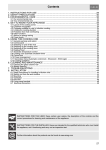
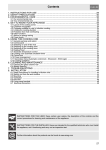
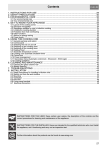
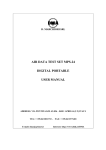

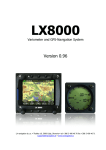

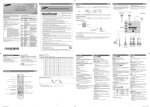


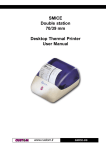
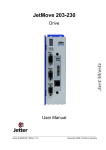
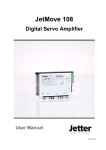
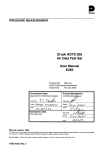
![Installation Manual [PDF 1 MB]](http://vs1.manualzilla.com/store/data/006009522_1-0fe6fa9acd9b0e1f3e4900405e8b6ec3-150x150.png)